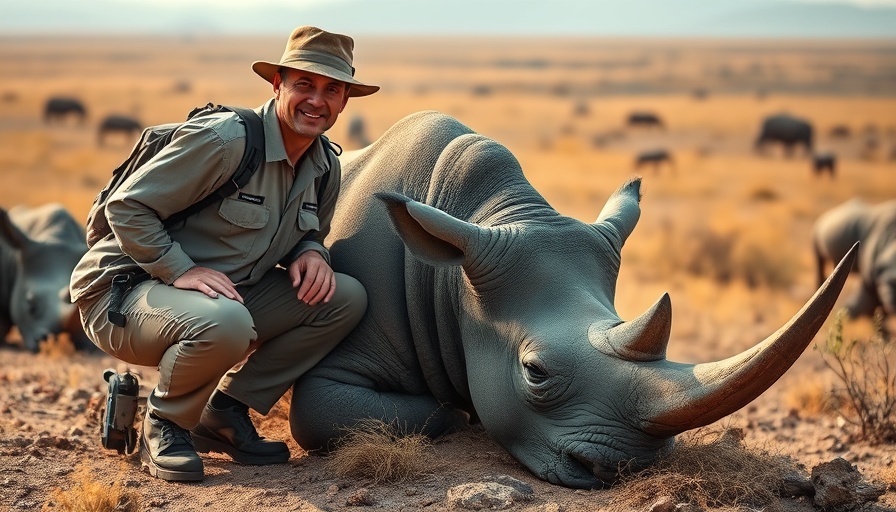
Revolutionizing Anti-Poaching Efforts
In a groundbreaking move to combat rhino poaching, scientists in South Africa have developed an innovative method to protect these magnificent creatures. The Rhisotope Project, spearheaded by a team from the University of the Witwatersrand, has introduced a technique to inject rhino horns with a radioactive material. This initiative aims to bolster anti-poaching efforts by making it easier for customs officers to identify and intercept smuggled horns as they travel across the globe.
Why Rhino Conservation Matters
Rhinos are not just an iconic part of Africa’s wildlife; they represent a crucial element of the continent's natural heritage. South Africa is home to the largest rhino population, yet hundreds of these animals are poached each year, driven by the demand for their horns in Asian markets. These horns are often used in traditional medicine or displayed as a status symbol, further driving the need for innovative protection methods.
The Scientific Background of Rhisotope Technology
The research behind the Rhisotope Project has been thorough, spanning over six years. Initial pilot studies involving 20 rhinos indicated that the radioactive material poses no harm to the animals. Professor James Larkin, a key figure in the project, emphasized that the process is entirely safe for the rhinos, effectively marking the horns in a way that they can be detected by international customs security measures.
Understanding the Illegal Trade of Rhino Horns
The poaching of rhinos and the illegal trade of their horns is not just an environmental crisis but a pressing global issue. The illicit market for rhino horns has flourished, propelled by unfounded beliefs about their medicinal properties. As a result, rhinos such as the white and black species—classified as threatened and critically endangered, respectively—are facing the threat of extinction. Uncovering and addressing the motivations driving this illegal trade is vital for conservationists.
Potential Global Impacts of the Rhisotope Project
The implications of successfully deploying this technology could ripple across the globe, reshaping conservation efforts in countries grappling with poaching. If the radioactive marking of rhino horns proves to be effective in reducing smuggling, other countries could adopt similar methods. This could lead to a significant decline in poaching incidents, allowing populations of the species to recover and thrive once again.
Future Trends in Wildlife Conservation
Innovation in wildlife protection is crucial to ensuring the survival of endangered species. The Rhisotope Project aligns with a growing trend of incorporating technology into conservation strategies. As technology continues to evolve, we can anticipate more solutions that blend scientific advancements with ecological needs. As Jessica Babich of the Rhisotope Project remarked, safeguarding one species serves the dual purpose of preserving natural heritage and maintaining biodiversity.
Engaging the Public in Conservation
Public awareness and engagement are essential components of conservation efforts. Understanding the issues surrounding poaching and the importance of rhino preservation helps foster a community dedicated to these causes. Strategies such as improved education on the impacts of the illegal wildlife trade, alongside community-driven initiatives, can empower individuals to take action. The more people know about the threats facing rhinos, the more momentum can build to support conservation measures.
How You Can Help
As individuals, there are concrete steps we can take to support global wildlife conservation efforts. Consider donating to reputable wildlife organizations working to combat poaching and protect endangered species. Joining local conservation initiatives, advocating for stronger environmental policies, and spreading awareness through social media are all impactful ways to contribute. Remember, every action counts in the fight against illegal wildlife trade.
The Rhisotope Project is a beacon of hope in the battle against poaching, representing scientific innovation and human dedication to preserving our planet's biodiversity. Together, we can take actionable steps toward protecting rhinos and ensuring these majestic creatures roam the earth for generations to come.
 Add Row
Add Row  Add
Add 




Write A Comment